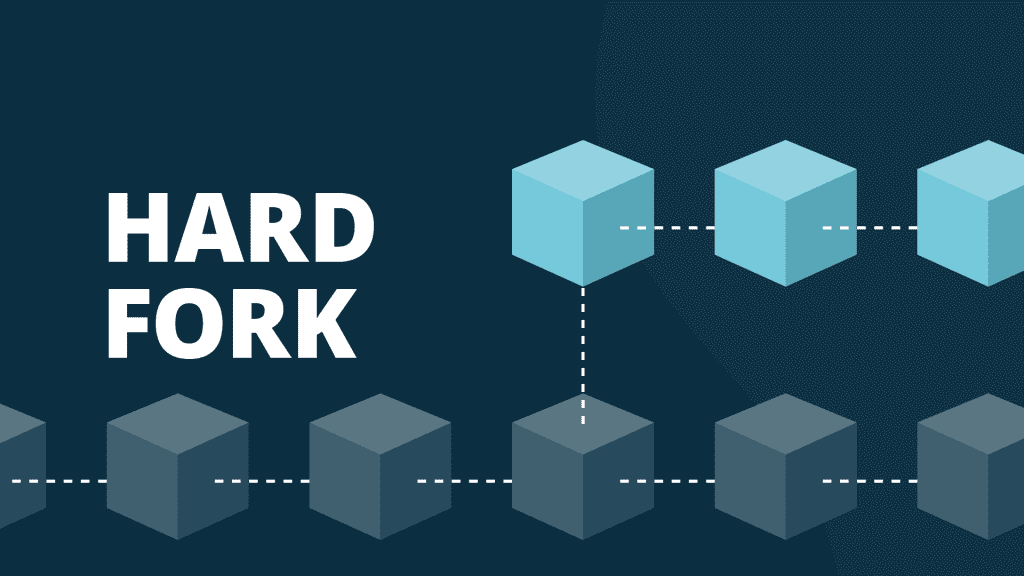The world of cryptocurrencies consists of quite a few terms that aren’t necessarily obvious to the average user. This stems from the fact that blockchain technology – which cryptocurrencies are generally based on – are complex IT applications that adhere to their own set of rules. A hard fork is one such concept. The term “fork” originates from the field of software development and has, over the time, acquired its own unique meaning in the context of cryptocurrencies. In the following, we’ll explain just what the term “hard fork” actually means.
The global IT network of a cryptocurrency
Cryptocurrencies – like Bitcoin – are based on a specific type of software. This software, which controls the storage of transaction data in the blockchain of a given cryptocurrency, is operated in an IT network comprised of thousands of computers around the world. Optimized for this purpose, these computers perform complex mathematical tasks to ensure that transactions are documented in a tamper-proof manner. The cryptographic processes involved encrypt and secure the data in such a way that it becomes resistant to any later modification.
Cryptocurrencies are based on software
Given that cryptocurrencies are software-based, their code can be changed. Updating Bitcoin’s software, also referred to as the Bitcoin protocol, happens regularly without the users even noticing. When an update is made, the IT network operators have to install the new version on their computers in order to remain part of that blockchain. In the world of software development, the term “fork” has come to signify the process of developing and making a new version of a piece of software available. The figurative image of a fork in the road illustrates this process: The old version of a given piece of software continues to exist, but there is a point in time at which a decision can be made in support of the new version. Deciding on the old or the new version can result in different outcomes, depending on the type of fork.
- Hard Fork: The old and the new version are not compatible with each other. This means that two versions of the blockchain are created from the point at which the fork is carried out.
- Soft Fork: The old and the new version are compatible with each other. The old blockchain will continue in the new version – with a few additional features added in the new version.
What does a hard fork mean for a cryptocurrency?
In a hard fork, the blockchain splits into a new dataset and an old dataset, both of which differ from each other only at the level of a particular block. The network participants are obligated to choose one of the two versions, because each has its own protocol, meaning they must update their software accordingly. But how do you know which one wins the race?
If a network splits, the winner is the one that carries on with the longest chain of blocks. So, essentially, it’s foot voting. The more users opt for one version, the more likely it is to prevail. The race for a version is finally settled when a majority is established. The version of the fork that gains the majority then becomes the final version. The old version usually dies out because, after a majority has been established, the minority also decides to use the winning version.
But here, too, exceptions can’t be ignored. After all, the loser in this race can still continue on as an independent blockchain and, if so, will have to give itself an appropriate new name. At that point, a new cryptocurrency with its own blockchain is created. This was the case in 2017, for example, when Bitcoin Cash lost in the race against Bitcoin – it’s continued as a standalone altcoin ever since.
Another exception is the fact that a hard fork can quite feasibly happen under “friendly” conditions. This is the case with Monero, for example. Certain upgrades can only be realized through radical changes. These changes, however, are not made in competition, but rather with agreement among all participants. In other words, it results in what is referred to as a consensus.
A hard fork on BISON
BISON will usually maintain the dominant version of a hard fork, which may be more reliable in terms of technical metrics like hashrate or block confirmations. This process will happen automatically – as a BISON user, nothing special has to be done. If a new cryptocurrency emerges from a fork, BISON cannot guarantee that it will support the less dominant blockchain. If a BISON user is in possession of a cryptocurrency that is about to undergo a hard fork and wishes to participate in it, they have the option to withdraw the cryptocurrency concerned in a timely manner to another wallet that is participating in the fork.
Conclusion: With hard forks, it's the majority that counts
The term “hard fork” describes the process of creating a new version of a software from an existing version through further development, replacing the previous version. The old and the new version of a blockchain are not compatible with each other. The IT network of a cryptocurrency is therefore obligated to decide on one of the two versions. Which of the two versions becomes the “official” one is determined by the response of the operators of that IT network: How many will install the new version, how many will stick with the old one? The weaker version will either disappear completely or continue to operate, which will then lead to the creation of a new cryptocurrency with its own blockchain.
